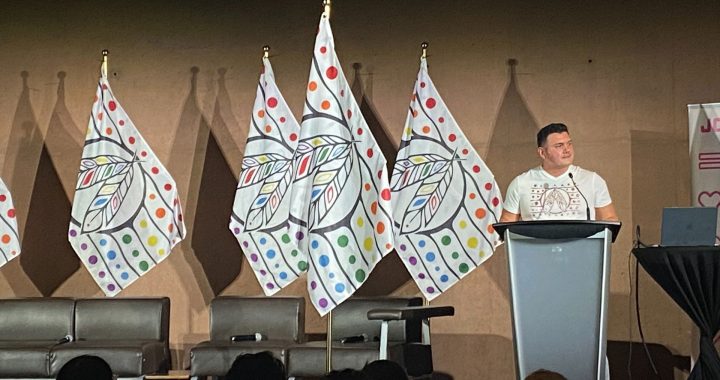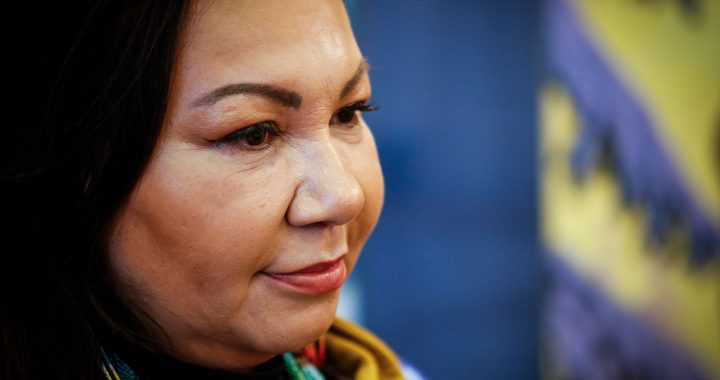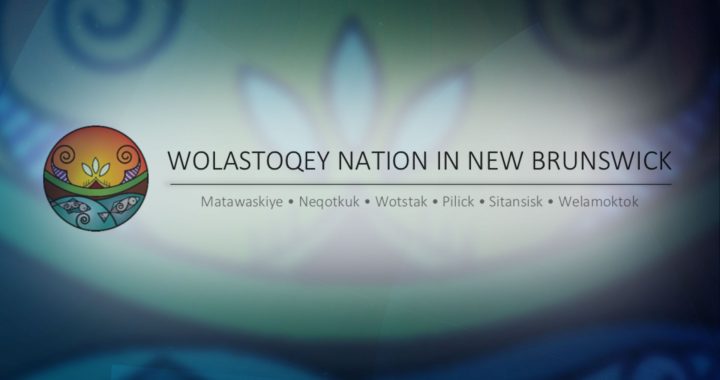The Supreme Court of Canada is upholding a rule requiring members of a First Nation in Yukon to live in the community to serve on the council.
The Court dismissed an appeal from Cindy Dickson, a Vuntut Gwitchen First Nation member who lives 800 km from her home community in Whitehorse.
The VGFN is a self governing First Nation in northern Yukon.
The case considered whether the Canadian Charter of Rights and Freedoms applied to a VGFN election rule that all residents must live in the community.
In a 317-page ruling, the court determined that the individual rights of Dickson in this case did not overrule Indigenous collective rights.
“The residency requirement is an exercise of an “other right or freedom” that pertains to the Aboriginal peoples of Canada under s. 25 of the Charter,” reads the decision.
According to the VGFN chief, today’s ruling was a victory.
“I am happy with the outcome. I’m happy with where we are. At least it gives us certainty going forward. For the last five years, we were, you know, uncertain as to where the outcomes would lie,”
Chief Pauline Frost told APTN News. Frost added that the nation wants to continue to build legislation for VGFN and protect Indigenous rights.
“It’s our intention to protect Aboriginal rights and treaty rights and inherent rights of our community. And we are a self-governing Indigenous community, and our seat of our government is on our settlement area,” said Frost.
Frost also said she hopes the ruling doesn’t dissuade people from running for VGFN council.
“We will do our utmost to ensure that they’re relocated in due course and that they’re supported when they relocate, and that we find them appropriate accommodations,” she said.
The case was a test of Section 25 of the Charter of Rights and Freedoms which is meant to uphold certain collective rights and freedoms of Indigenous peoples when those collective rights conflict with an individual’s Charter rights.
In an email to APTN, Dickson said she was disappointed with the decision.
“Of course, I’m not completely happy with the Supreme Court decision but I am happy that I still hold Charter rights and that the decision recognizes that s. 25 does not operate as an absolute shield to those Charter rights,” said Dickson.
She added that she was happy there was more clarity about individual rights versus collective rights.
The Court found that while s. 25 of the Charter applies, the individual rights of s. 15 also apply.
In a case where both apply the court ruled the “aboriginal and treaty rights” laid out in s. 25 wins in this situation.
The fight for a council seat
In In 2018 Dickson tried to run for a seat on council with VGFN’s government. Her nomination was thrown out due to a requirement in the VGFN’s constitution that states all candidates had to live on settlement lands in Old Crow.
Old Crow is a fly in community. She said she couldn’t live in Old Crow for many reasons including a son who needs to live near a hospital.
In 2019, Dickson challenged the community’s residency requirement in Yukon’s Supreme Court, arguing that the VGFN’s constitution is discriminatory and treats non-resident citizens differently than those living on settlement lands.
Dickson said the requirement violated her equality rights and the rights of other Vuntut Gwitchin citizens living away from Old Crow under s. 15(1) of the Charter which states that every individual is equal and has the right to equal protection.
While Yukon Supreme Court Chief Justice Ron Veale found the requirement to move within 14 days was unconstitutional, he ruled in favour of the First Nation that elected officials must reside on settlement lands.
Both Dickson and the VGFN filed an appeal to the Supreme Court about this ruling.
In their appeal, the VGFN said that s. 32(1) of the Charter, which identifies certain government entities bound by it, including federal and provincial legislatures and governments, did not apply to the self-governing First Nation who was not bound by it.
Simple questions on Indigenous governance have remained unanswered
Ryan Beaton, an expert on constitutional and aboriginal law, said the case was significant because it offered an extended interpretation of s. 25 than ever before.
“The applicability of the Charter was the biggest overarching issue that was addressed,” said Beaton.
“This is really a first major statement from the Supreme Court on how it sees indigenous law and indigenous self government sitting within the Canadian constitutional landscape.”
Justices Michelle O’Bonsawin and Sheila Martin concluded that the residency requirement was unconstitutional and should be struck down.
Justice Macolme Rowe, who wrote separately, sided with the VGFN that the Charter did not apply to the VGFN Constitution.
“The residency requirement draws a discriminatory distinction between VGFN citizens that live on the settlement land and those that do not,” read the dissenting opinion.
Beaton said that there are a lot of unsettled issues in Indigenous law.
“For a lot of people I know, and I teach this material for students, it’s surprising that really seemingly basic questions are still unanswered in Canadian law,” said Beaton. “Following the birth of Canada, there was a long period in which courts and governments simply ignored or dismissed or suppressed the existence of Indigenous laws and Indigenous self government for ideological reasons or the sense of that Indigenous peoples did not have real sovereignty, and real legal orders.
“Now that that prejudice has been repudiated, we see a resurfacing and resurgence with all these questions about how Indigenous law works with Canada’s constitutional system, and so it’s for that reason that courts are only now really beginning to grapple with these issues,” said Beaton.
Although there is now a framework for courts to look at to interpret s. 25, Beaton said that more clarity, and an actual legal test for when collective rights trump individual rights is not yet established.









